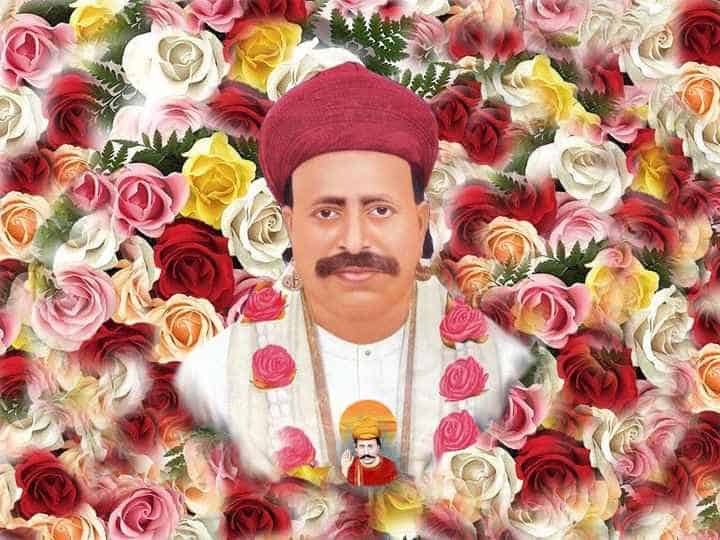
Last year in November, his cousin Sain Rajesh Lal, had visited Vadodara and met the local Sindhi community.
Sindh Courier
Vadodara, India
Sain Dhirajlal, great grandson of Amar Shaheed Sant Kanwar Ram, paid a 2-day visit to Vadodara (formerly Baroda) city of Gujarat state on August 31 – September 1, 2022.
He visited Sant Mata Maya Devi Darbar, and the home of Haresh Agnani, SSD Dham Vadodara and distributed food and sweets to Sindhi community people at Maya Devi Darbar along with Kamlesh Wadhwani and various Shevadhari. On this occasion, slogans of Jai Jarwari Sada Bahari were chanted.

 During visit to Haresh Agnani’s home, Dhiraj Lal gave blessings to his family members. Sain Dhiraj Lal is fourth generation of Sant Kanwar Ram (Kanwar Ram – Peshuram – Manohar Lal – Dhiraj Lal).
During visit to Haresh Agnani’s home, Dhiraj Lal gave blessings to his family members. Sain Dhiraj Lal is fourth generation of Sant Kanwar Ram (Kanwar Ram – Peshuram – Manohar Lal – Dhiraj Lal).
Last year in November, Sain Rajesh Lal, the other great grandson of Sant Kanwar Ram, had visited Vadodara and met the local Sindhi community.


 Dhiraj Lal and Rajesh Lal are cousins. Rajesh Lal’s father Jashan Lal and Dhiraj Lal’s father Manohar are real brothers. They live in Amravati Maharashtra state.
Dhiraj Lal and Rajesh Lal are cousins. Rajesh Lal’s father Jashan Lal and Dhiraj Lal’s father Manohar are real brothers. They live in Amravati Maharashtra state.
About Bhagat Kanwar Ram
Kanwar Ram was born on April 13, 1885, at Tarachand’s house in Jarwar village of Mirpur Mathelo tehsil in the then Sukkur district. The area is now a part of Ghotki district. His father was a shopkeeper. Kanwar Ram was one of the disciples of Satguru Satram Das of Rahrki tehsil. He was always seen wearing a long kurta and carried a red turban on his head. He loved and used to sing poems of Sufi poets Shah Abdul Latif Bhittai, Sachal Sarmast, Sami, Mira and Kabir. The main theme of his poetry was the praise of the Creator. Singing Sufi ragas, he promoted the values of humanity, love, peace and harmony.
God had gifted him a charismatic, sweet and melodious voice. According to local legend, people would forget everything else when he started singing and dancing.
 Some of his compositions are still sung by aficionados in Sindh and in India. Out of his 20 extant compositions the most popular is Naale Alakh Je Bedo Taar Muhinjo. Sindhi singers in Pakistan as well as India sing this song at Sufi events taking place anywhere in the world.
Some of his compositions are still sung by aficionados in Sindh and in India. Out of his 20 extant compositions the most popular is Naale Alakh Je Bedo Taar Muhinjo. Sindhi singers in Pakistan as well as India sing this song at Sufi events taking place anywhere in the world.
Believing that his poignant voice was a gift of God, he never made it a source of livelihood for himself and his family. Huge amounts of money would be offered as gifts when he sang and danced. However, the Bhagat used to distribute it all among the poor and the needy regardless of their race, religion and sect. He never took or used any of the money for himself or his family. According to Shahzada Mohan Lal, who now lives in Lucknow, India, he was given the title, Bhagat, in recognition of his services for humanity.
On November 1, 1939, Bhagat was shot and killed in a railway carriage at Ruk Railway Station in Sindh. The murder, by a religious extremist, was seen as yet another attempt to destroy the Sufi fabric of Sindhi culture.
A statue to honor the Bhagat has been placed at the temple of Baba Sri-Chand at Faqir village in Thatta district of Sindh.
_________________